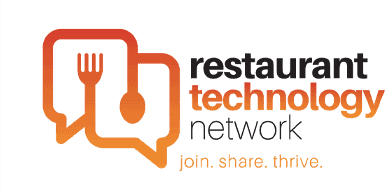Technology is a one-way train in today’s world. It keeps moving forward, and individuals and industries can only try to keep up as we adapt to the many advancements that it brings us.
One aspect of technology that’s continuing to advance exponentially is mobile communications. 1g, 2g, 3g, 4g, 5g—the more ‘g’s we get, the more power we’re granted by those glossy metal and glass gadgets in our pockets.
As we moved from 2019 into 2020, mobile apps and digital ordering were already making big waves in the restaurant industry. With the unexpected advent, however, of COVID-19 and social distancing and shelter-at-home, this already growing phenomenon has exploded overnight as a homebound nation searches for safer, contact-free methods of acquiring the things we all need to survive on a daily basis.
A recent study by Bluedot titled The State of What Feeds Us quantifies this jump in the use of mobile technology for purchasing food and essential items and gives insight into the apps being downloaded and the demographic groups that are taking advantage of them. Here’s what it says:
Topline results
According to Bluedot, the top takeaways of their study, which was based on a survey of 1,630 American consumers, are:
- The majority of consumers (53%) are adding more mobile apps to limit their contact with on-site staff.
- More than half (51%) have downloaded at least one new app to purchase food and essentials, with 37% adding more than two.
- Overwhelmingly, consumers feel safer at a drive-thru that offers less or zero human contact.
Let’s break that down a little bit.
What we’re downloading
The study indicates that just over half of respondents (51%) are downloading at least one new app overall. The percentage of those downloading two or more apps comes in at 37%, but that increases to 45% when looking at established users of mobile apps.
The types of apps vary from groceries (20%) to big retail (24%) to fast food (23%), fast casual (18%), social media (19%), and food delivery (19%).
Who’s downloading?
As for who is doing all this downloading, results show generational differences. Groups who say they’re more likely to use mobile apps now than they did prior to the pandemic are Gen Z (52%) and Millennials (31%).
The types of apps downloaded also indicate a generational bias. Baby Boomers as well as Gen Xers seem to favor big retail apps as well as grocery store apps. Gen Zers are most likely to download fast food apps, with big retail store apps coming in second. And Millennials’ top two choices, in order, are food delivery and fast food.
Reasons for using mobile apps showed somewhat of a generational split as well, with ease of ordering coming out on top for Gen X, Gen Z, and Millennials. Baby Boomers, on the other hand, were more concerned with limiting their contact with staff onsite.
Safety
And speaking of limited contact, what about safety? What do we all think about the risks and benefits of the various methods of food? Bluedot’s study covers that as well.
53% of the study’s respondents reported that their main reason for adding more mobile apps to their arsenal was to help limit contact with on-site staff while acquiring food or other essential items. Access to food has basically been boiled down to three options: pickup, drive thru, and delivery (with delivery being divided between first-party and third-party options). But which options do we feel most comfortable with in regards to minimizing our risk of contracting COVID?
Overall, it seems that study subjects feel safest using curbside pickup (31%) and drivethru (25%) over any form of delivery. Roughly one-third of all respondents say they have used drive thru or curbside pickup more or much more often over the last month than they did prior to the pandemic.
Curbside pickup seems to put the most respondents at ease when it comes to safety concerns with 31% of us preferring curbside while 25% prefer drive thru. Confidence at the drive thru increases, however, at those establishments that offer low- or no-contact service and where sanitation and safety information is prominently posted. Despite this stated preference for curbside over drive thru, however, 75% of us still plan to visit the drive thru during the pandemic. 52% say we’ll use it the same amount or more than we did before.
When it comes to delivery, 31% of respondents admit to having ordered food for delivery in the past three months, but now, in light of COVID, most feel that third-party delivery services are the least safe option at their disposal. Overall, fully half of respondents plan to use curbside pickup throughout the pandemic. 27% of those either are using or plan to use it more often than before.
As we’re all well aware by now, surviving as a business during this pandemic requires the ability to quickly adapt your operations to this new reality, in which the best interaction is one conducted through technology, with as little human contact as possible. OneDine is committed to helping our restaurant family get through this challenging time by offering our Parking Lot Order & Pay technology to restaurants completely free of charge (normal credit card processing fees apply).
Want to see if we can help you give your customers the contactless experience they demand? Find out more here.





